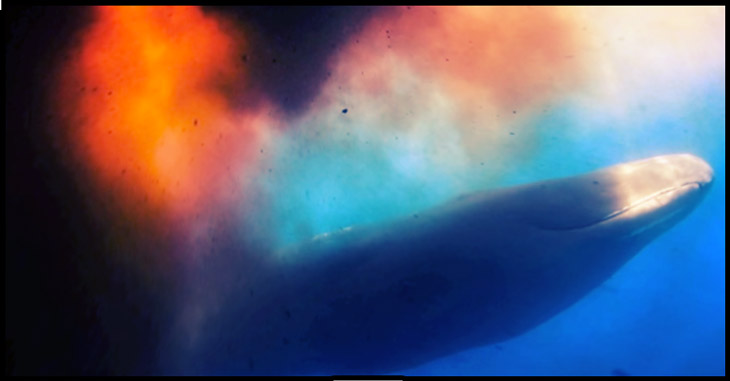Whale Poo and You
Closely encounter a semi-liquid cowpat and you and your wet shoe know all about it. So just imagine emerging from a frolic in the surf, slicked in the warm, crustacean-based slurry that is whale feces. Why? Because afterwards you’ll feel incredibly happy that hasn’t happened to you yet. Also, because it will turn your thoughts toward whale waste, a substance that has done you more favors than you know.
https://www.youtube.com/watch?v=jil6Z3pQDP4
The boring reality is you are extremely unlikely to ever physically connect with whale poo. That’s because it’s runny, which means it disperses quickly once released, and because it’s typically released far offshore. It is in fact whale poo’s liquidity and tendency to spread apart as it rises to the ocean’s surface and its richness in iron that make it so important to ocean ecosystems and to you.
Iron-poor Oceans and Anaemic Phytoplankton
Iron, you may not know, is in short supply in some of the world’s oceans, including the enormous Antarctica-encircling Southern Ocean, and this has big consequences for the tiny floating sea plants called phytoplankton that live in them. Where sea iron levels are too low phytoplankton just can’t grow. And this means they’re not around to photosynthesize, which their worldwide population has traditionally done on a larger scale than all the planet’s rainforests put together!
Phytoplankton: The Greatest Photosynthesizers
Naturally, when less carbon dioxide is being absorbed from the atmosphere by little green specs in the sea, more of it is hanging around and helping things heat up, in a global warming kind of way. So, it’s in the interest of most organisms on Earth for phytoplankton to be plentiful. And it’s only within the last few years that scientists have discovered that iron-rich whale poo plays a huge role in feeding phytoplankton.
Whale Waste as Phytoplankton Fertilizer
Of course, the iron in whale feces has to come from somewhere, and that somewhere is very often krill. During the feeding season in the Southern Ocean, adult blue whales eat up to two tons of krill every day, and most of the iron they consume in doing so gets released in slurry-faeces-form near the ocean’s surface. That same slurry rises right to the top—where iron-hungry phytoplankton like to grow.
So, to recap: more whale poo in the Southern Ocean means more phytoplankton, more removal of carbon dioxide from the air and importantly, less warming of the globe. Unfortunately, much less whale poo is what’s out there now, due to the large decline in whale numbers. Fixing this situation will require stopping whale hunting and restoring whale populations, so their poo can keep providing a critical ecological service to microscopic sea algae and innumerable other living things, including you.

































































































